Running P Cattle Co.: Rising from the Texas ashes
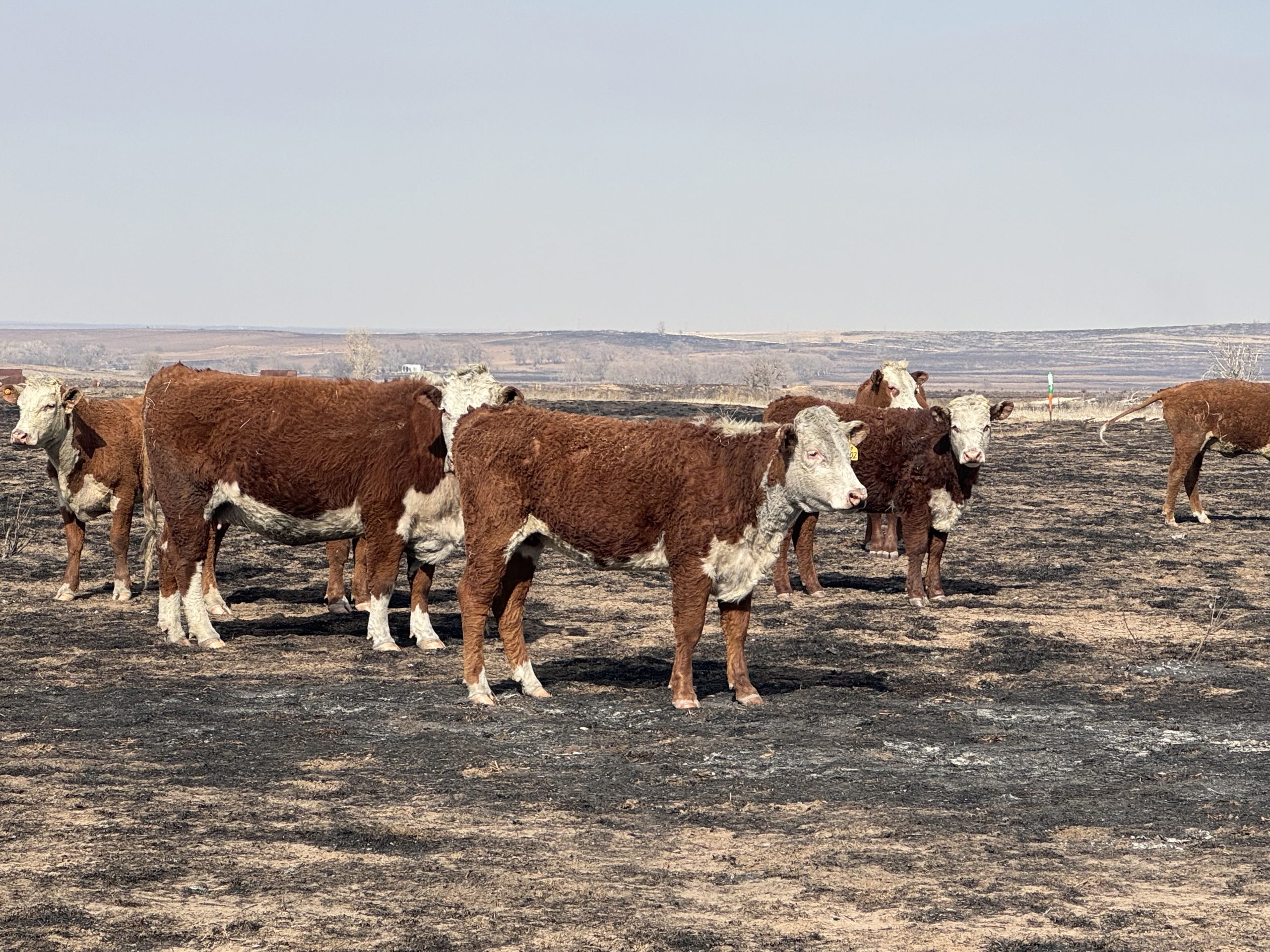
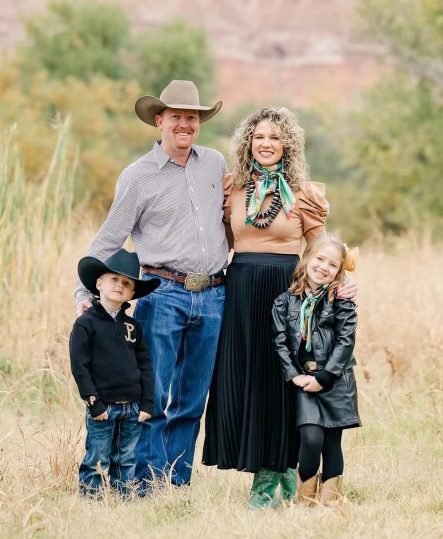
In January, Drew, Lauren, Mila and Miles Perez of Running P Cattle Co. in Canyon, Texas, were riding a high. Their bred and owned bull, Rubble, was selected as the grand champion Hereford bull at Cattlemen’s Congress in Oklahoma City, Oklahoma.
It was a proud moment for the young family, who started their purebred Hereford and Angus cattle operation in 2018 with 10 cows. Over six years, they had grown the ranch to 110 cows with plans for their first production sale in 2025.
“We worked so hard for so long and finally had the expected calf crop that was going to take us to that next level,” Drew said. “It had been nothing but pure growth mode for so long and striving toward our goals.”
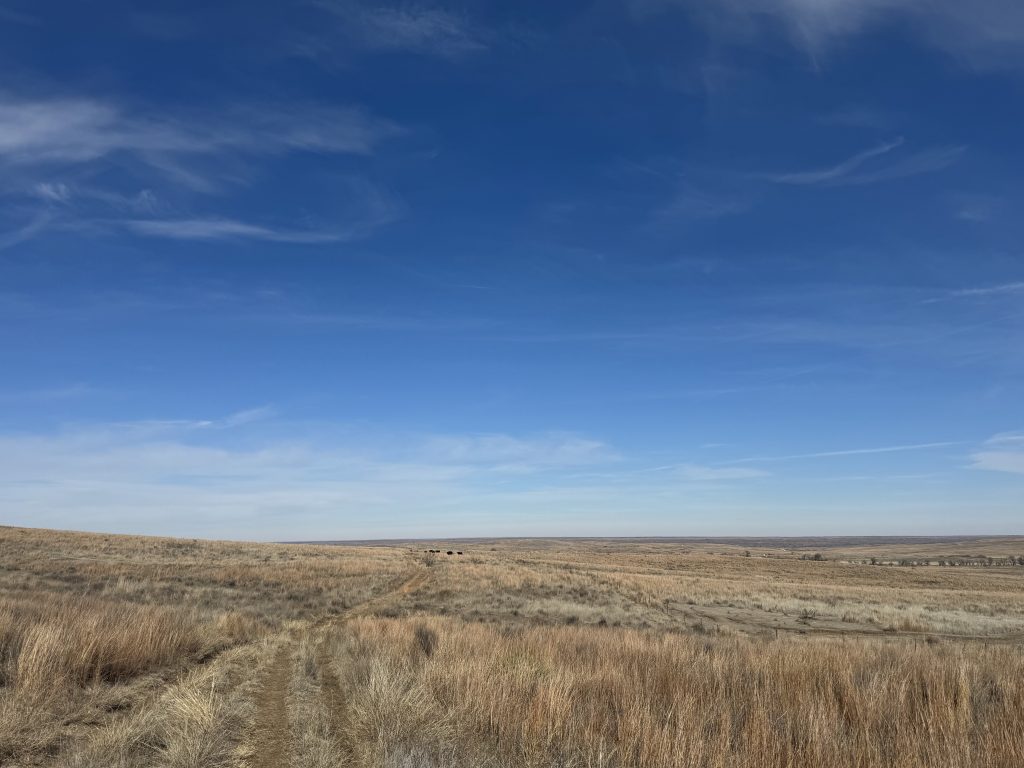

An inescapable inferno
By the end of February, everything had changed. Disaster struck when the Smokehouse Creek fire blazed a path right for the Perez cattle, which were on leased pasture near Canadian, Texas.
The Smokehouse Creek fire started on Feb. 26 in the Texas Panhandle, and while the Perez family knew about the fire and were monitoring its progress, their cattle in Canadian were not originally in the trajectory of the flames.
“That fire was really long, but it wasn’t very wide,” Drew said. “The constant wind in one direction was kind of keeping it lined out in one direction, and it wasn’t headed toward us. It was 60 miles away and headed northeast, and Canadian is south and east. So, for the longest time, we felt fairly OK that it was going miss us just because of the direction that it was going.”
However, as the Perezes watched the Weather Channel on the morning of Feb. 29, they saw that the wind could potentially switch directions that night. Out of an abundance of caution, Drew hooked up his trailer and drove the 120 miles to his leased property in Canadian to start moving cows.
“By the time I got there, the wind had switched directions a lot sooner than expected.” Drew said. “The fire was 60 miles away when I started talking about moving cattle, and by the time I got to the cattle it was basically there. I pulled in to where my cows were, and there were fire trucks, and the firemen were getting masked up. They told me I had 30 minutes before I had to leave because the fire was going to be there in a heartbeat.”
Drew had few options with one trailer and 110 cows on open range. Instead of trying to catch some of them in the trailer, he fed them in the safest locations in the pasture, hoping they would be protected from the flames.
“It was mind-boggling to look at that smoke coming in and see just how massive it was,” Drew said. “You know, normally when a fire comes, you can cut a fence and move them to a pasture or two over to get the cows away from it. This fire was 70 miles wide, and there was no way of escaping it. Those cows were right in the middle of it with 20 miles of solid fire on either side.”
The aftermath
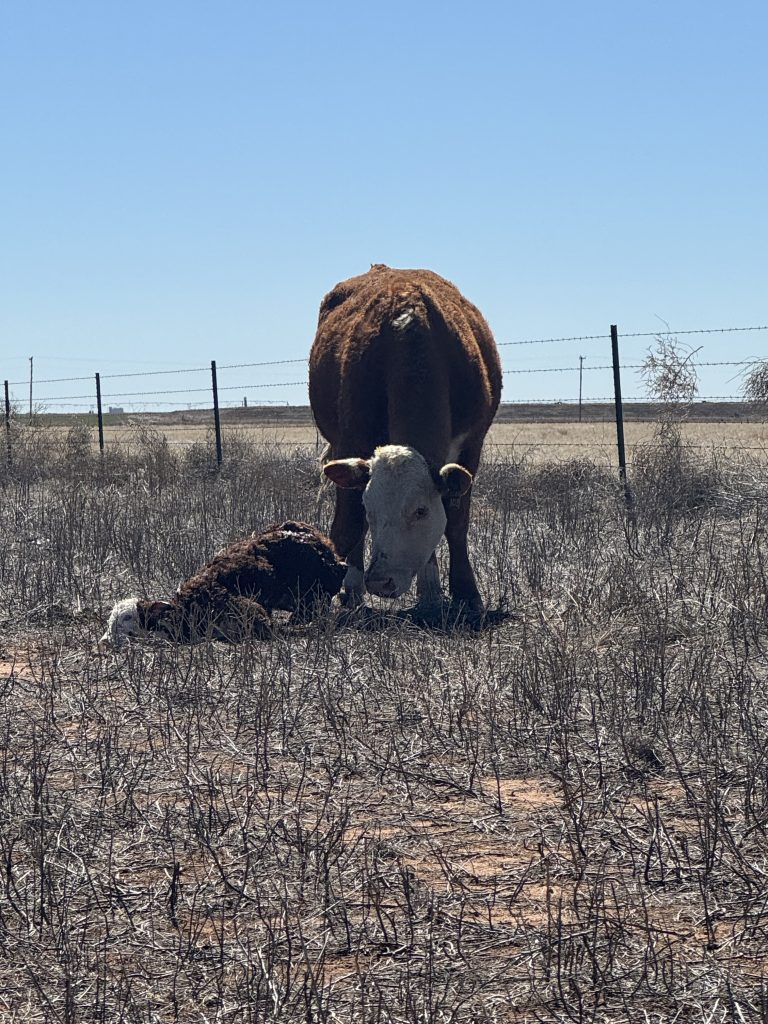
After the inferno had passed, Drew returned to the property in Canadian to a pasture of soot and ash. Between cows that perished in the flames and animals that were suffering and had to be euthanized, Running P Cattle Co. lost 45 registered Hereford cows. Drew said even two months later he is still treating cows’ udders, eyes and feet due to the fire.
“I’ve never shot so many cattle in one day in my life,” Drew said. “They were burned so bad if they weren’t laying to where you could see their brand, you couldn’t really tell if they were yours or not.”
Almost every cow in the path of the fire was bred or was a full or half sibling to that champion Hereford bull. Furthermore, the timing of this tragedy made the fire even more devastating for the Perez family because most of the cows in the path of the fire had calving dates of March 1.
“I knew what our due dates were, and I knew which cows were due to calve when,” Drew said. “When I was putting those cows down, they were so close to calving you could see the calf moving inside them. That was tough, but there was nothing else to do. They were in so much pain. I got to the point where I was really glad when a neighbor showed up to take over because I couldn’t do it anymore.”
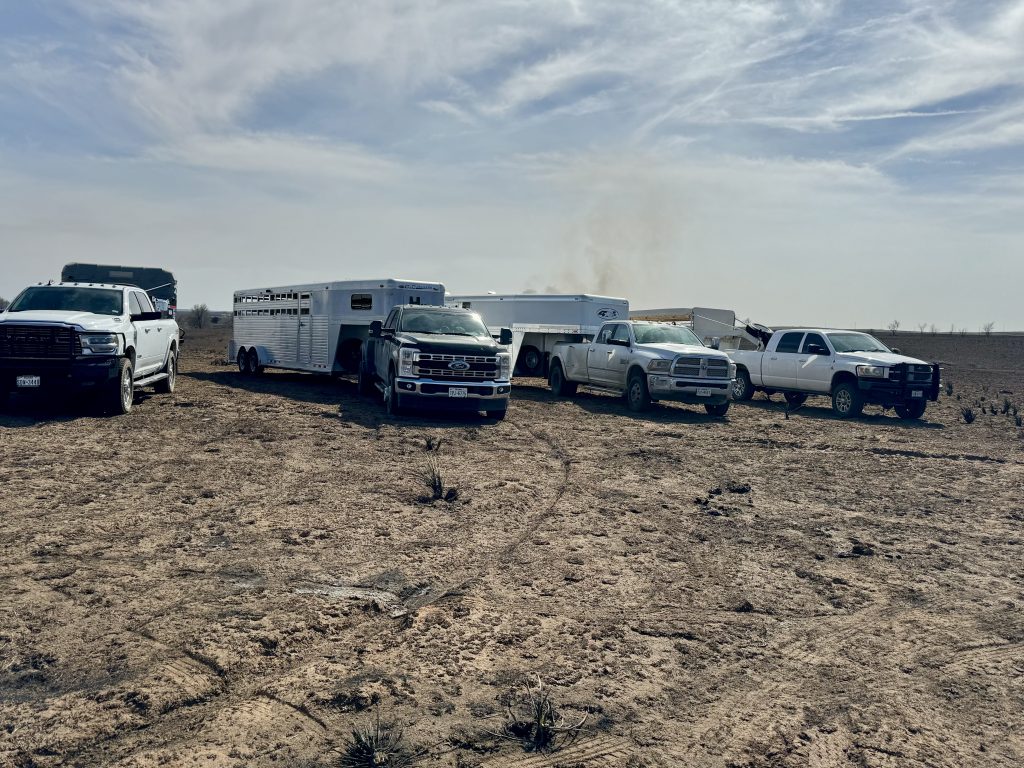
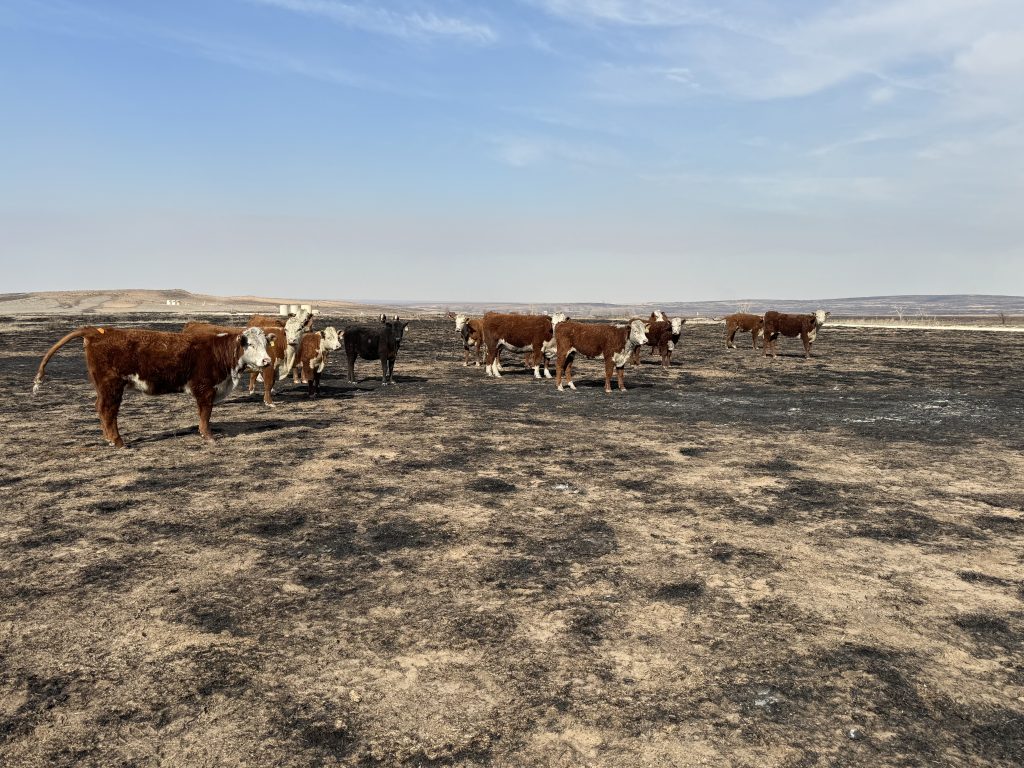
Even with emotions wrapped up in the livestock losses, Drew still had 65 cows to move from the scorched prairie, and many of them were about to calve. Some of Drew’s neighbors in Canyon, Joe and Joanna Hughes, offered to help transport the remaining cows and provided pasture for them. Drew was overwhelmed with the support his family received in just the short time after the fire.
“We had more trailers show up than we had cattle to move out of there,” Drew said. “We knew we needed to go somewhere with those cows because they were calving right then. The morning after that fire we had embryo calves that were born on top of the ash. The Hugheses and all the people who helped were just such a blessing. I didn’t even know the people who were showing up and loading my cows up, but that’s just the type of people who are in this area, and it’s why we’re so fortunate to live here.”
The spirit of rebuilding
Rebuilding a purebred cow herd is not like replacing other possessions lost in a fire. Genetics are curated over years of selection decisions, and it takes time for these animals to grow and develop the next generations.
“The lifecycle on these cattle is such a long timeframe,” Drew said. “If you’re planning on selling bulls down the road to somebody, it’s a four-year process by the time you get it to that stage where you’re actually marketing those cattle to somebody. It’s a little bit different than a commercial operation where you can go buy bred cows and have a commercial calf to sell this fall. If you’re going to transfer embryos into something, it’s up to a year before they’re born and another year to wean them. Then you breed them the next year and wait another year for them to raise a calf the following year. Then finally you sell that calf next year.”
Sign up for HPJ Insights
Our weekly newsletter delivers the latest news straight to your inbox including breaking news, our exclusive columns and much more.
Additionally, there is no return on investment for years.
“When you’re in growth mode it seems like you’re funding that venture more than you’re ever taking away from it,” Drew said.
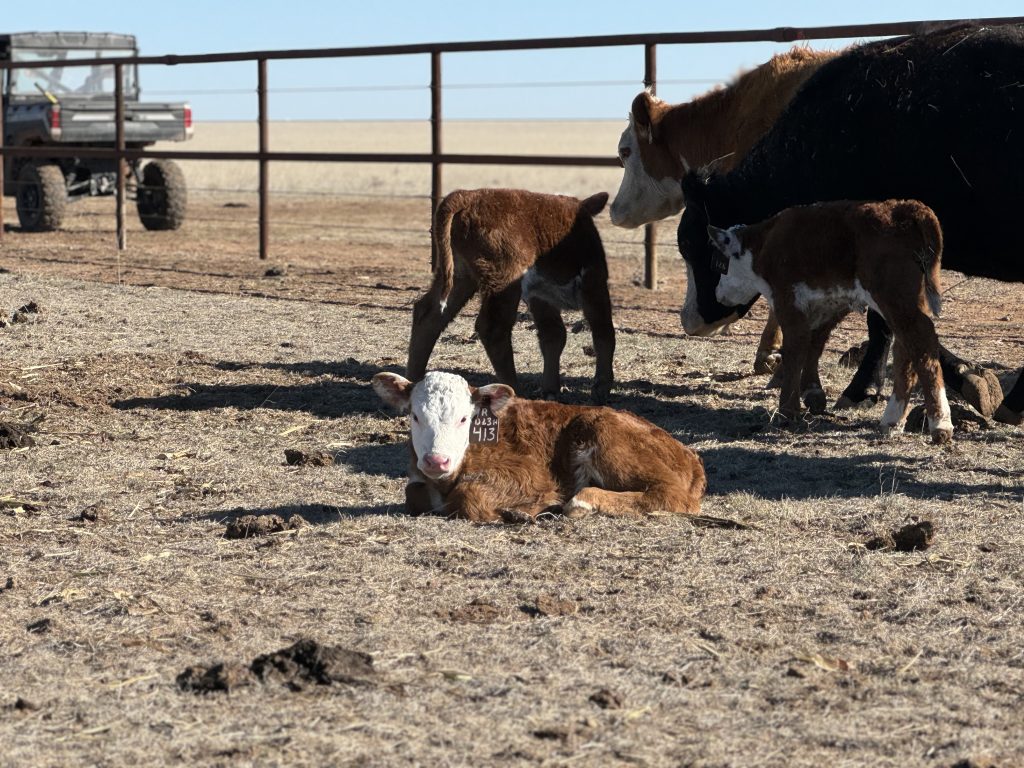
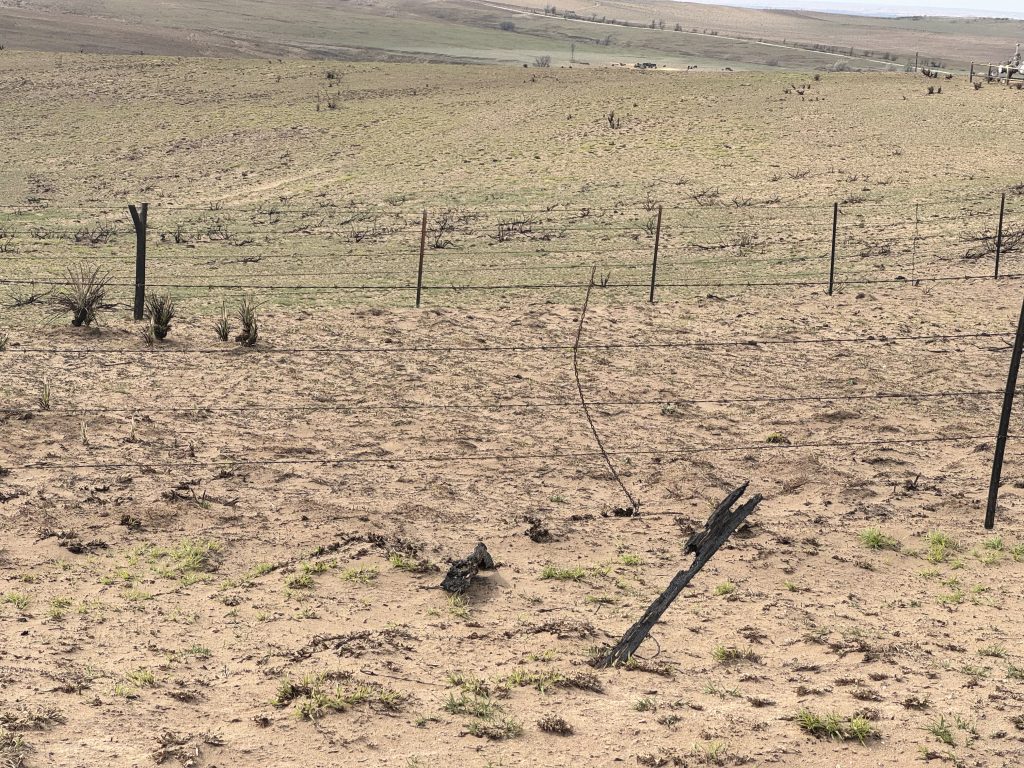
Drew said he’s reluctant to build his herd back before ensuring he has pasture for it. Even so, the Perezes said they plan to keep their original goal of having their first production sale in 2025. It will just be smaller than originally expected.
“We’re going to figure out a way to get there,” Drew said. “It may not be easy, but we’re setting that goal for ourselves and doing a lot of work this spring to make things happen.”
For the Perez family, leaning on their Christian faith and looking toward the future have been crucial for coping with this tragedy.
“We’ve tried to be very positive through this whole thing,” Drew said. “It’s easy to get down, and it can be a scary place to be if you let that beat you down too much. We are looking at this as a learning experience, and we’re very fortunate to have the cows we have left. Maybe this is God’s way of saying, ‘These are the cows that are left, and they are the ones that you need to focus on.’ ”
Lacey Vilhauer can be reached at 620-227-1871 or [email protected].



